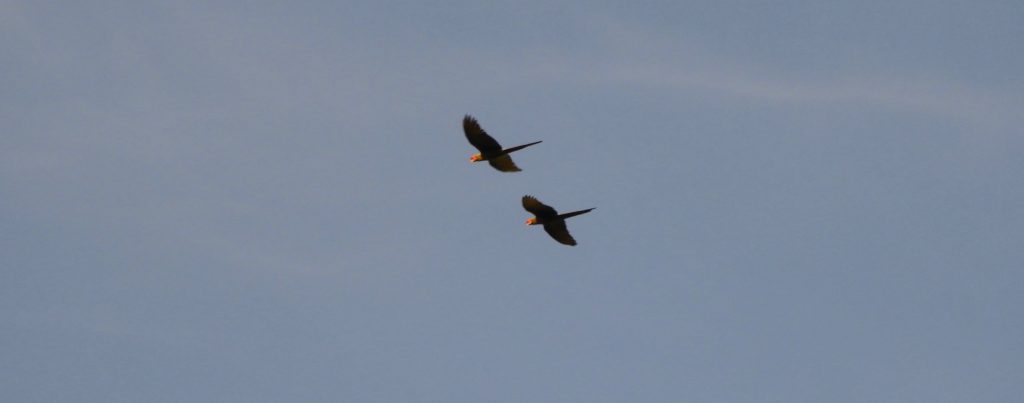
Sotano De Las Huahuas, San Luis Potosi, Mexico. November 17 2021. I’ve enjoyed many heart-stopping birding experiences over the years but today’s was without doubt one of my most extraordinary. It was in Central Mexico, a tropical place, and started with a pre-dawn hike through a rain forest: First down a knee-jarring series of solid but uneven stone steps, our way led by pools of light from the lanterns and flashlights ahead. Downhill for perhaps fifty, maybe a hundred, steps to a brief flatness and then back uphill, hard work up. I don’t know if anyone was counting but perhaps three-hundred, six-hundred, maybe more of those same uneven steps. The altitude here was in the 2,000 metres range and my heart pounded as my lungs tightened, squeezing for more oxygen.
We took a few rests as daylight grew and I savoured the privilege of being here, of being allowed and able to be here, at dawn, at my age, and giddy with the exhilaration. Another few hundred steps and now, just about daylight, we stood at our goal, the edge of a vast sótano, a sinkhole or pit cave, a deep hole opening into the dark basement of a mountain.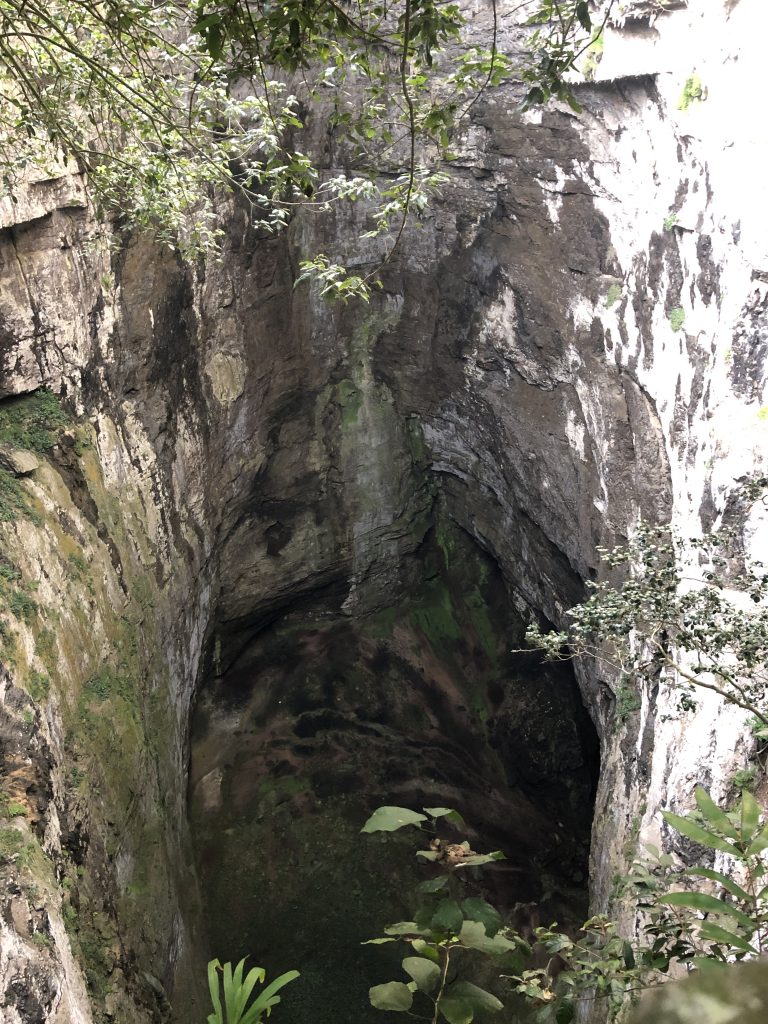
A sótano is one of the many creations of rainwater dissolving limestone, a drip by drip process that creates cracks and clefts and makes underground streams and caves. If and when the roof of a deep cave collapses, a massive hole may open to the sky, like the one we were staring down.
This sótano, a blemish on the side of a several thousand-metre-high mountain, was huge. It could have been almost any dimension, length, breadth and depth, it was impossible to tell without determinable references, but an interpretive sign explained “It has one of the largest underground halls in the world (184 metres wide and 290 metres wide) …fits a soccer stadium and accessed by a 90 metres high and 30 metres wide opening.” The spectacle was literally awesome; the word chosen and written in the sense of emotionally overpowering, not in the debased sense to describe anything one step above trivial.
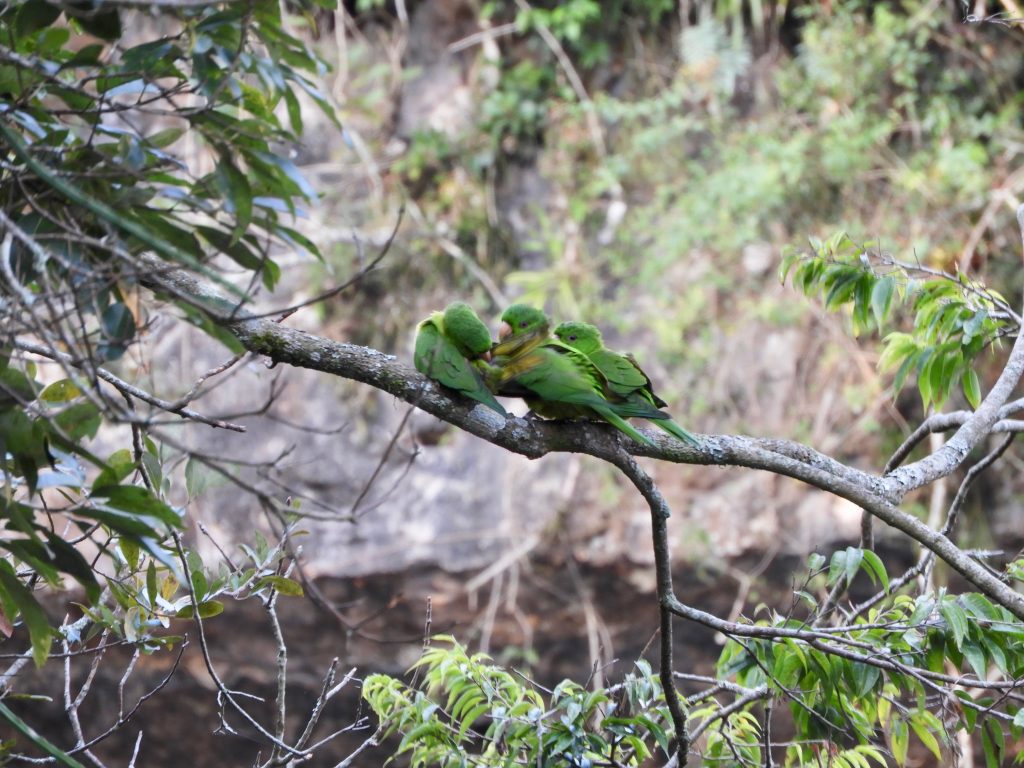
But our purpose here was not head-spinning thrills, it was to watch the early morning flights of night-roosting White-collared Swifts and Green Parakeets. Now under beams of sunlight, the swifts swept and wheeled in large, tight flocks circling around the bowl, gaining height with each spiral until released to the green forest and sunlight. The bright green parakeets were happy to see the day too, they were screeching and chattering among themselves in social gatherings. We watched as small groups criss-crossed just below us in the depths, parties of bright green against the dark. They had places to go and things to do but seemed unconcerned about a Peregrine Falcon that circled within the deep shadows. Much of parakeet life seems to be about visiting neighbours and gathering to preen and socialize.
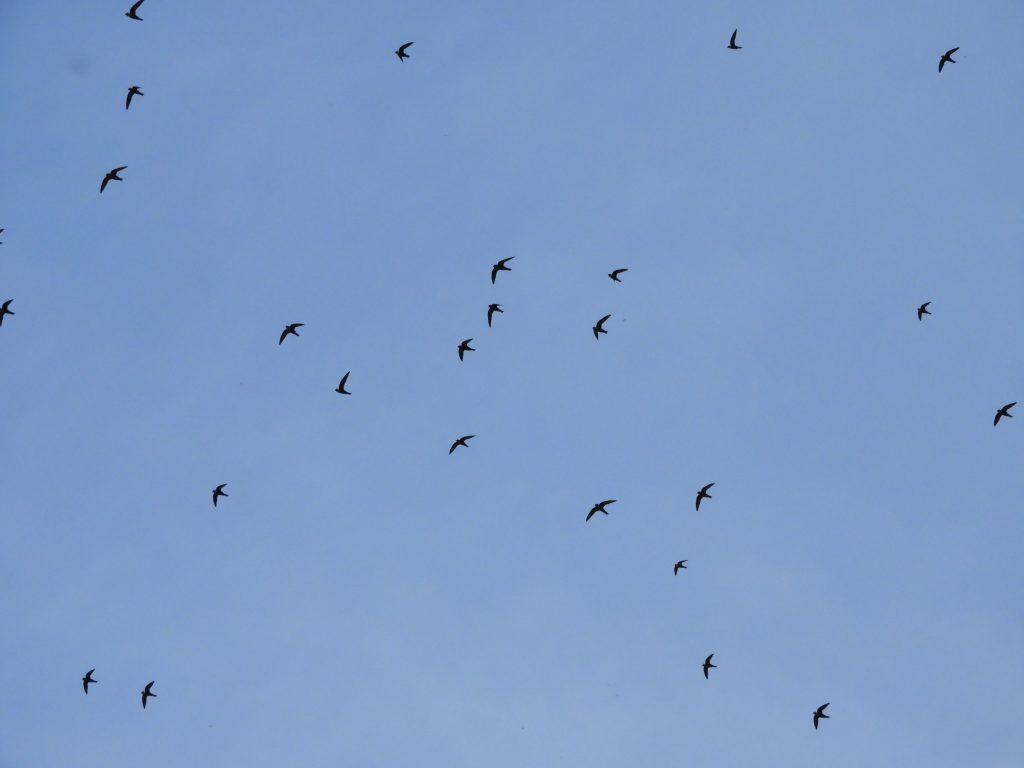
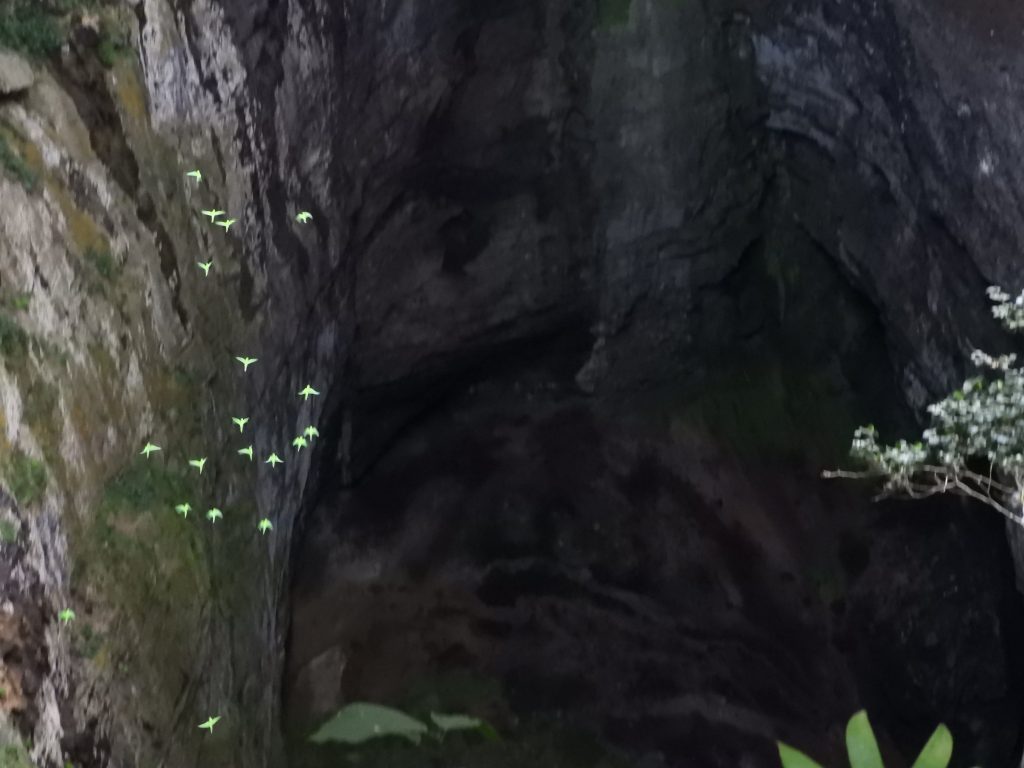
We couldn’t move, it was almost too much to absorb, the bright sky above, criss-crossed by parties of Military Macaws, a frame of forest wrapped by circling swifts, and the dark and irrational pull of the emptiness below alive with parakeets.
Amazing! Thank you for sharing your wonderful experience!
WOW! Exciting description of an amazing experience.
We’ve spent some time in St Luis Potosi when we wintered in Mexico but never imagined this hidden (thank heaven) gem.
Sadly, we did see many Macaws and Parakeets being sold by roadside and market vendors.
Thank you for posting this ‘uplifting’ adventure into their still safe habitat.